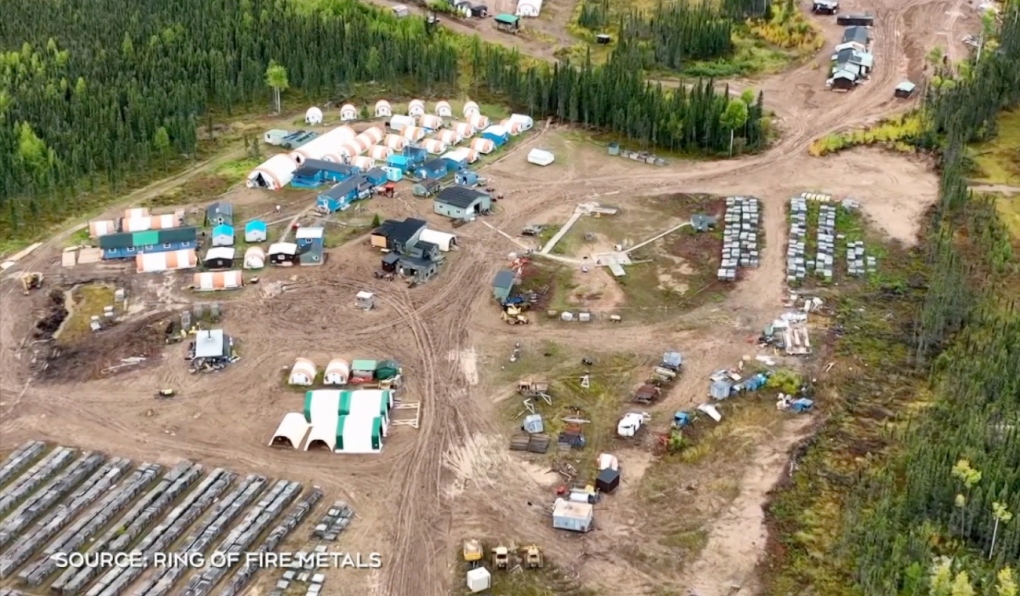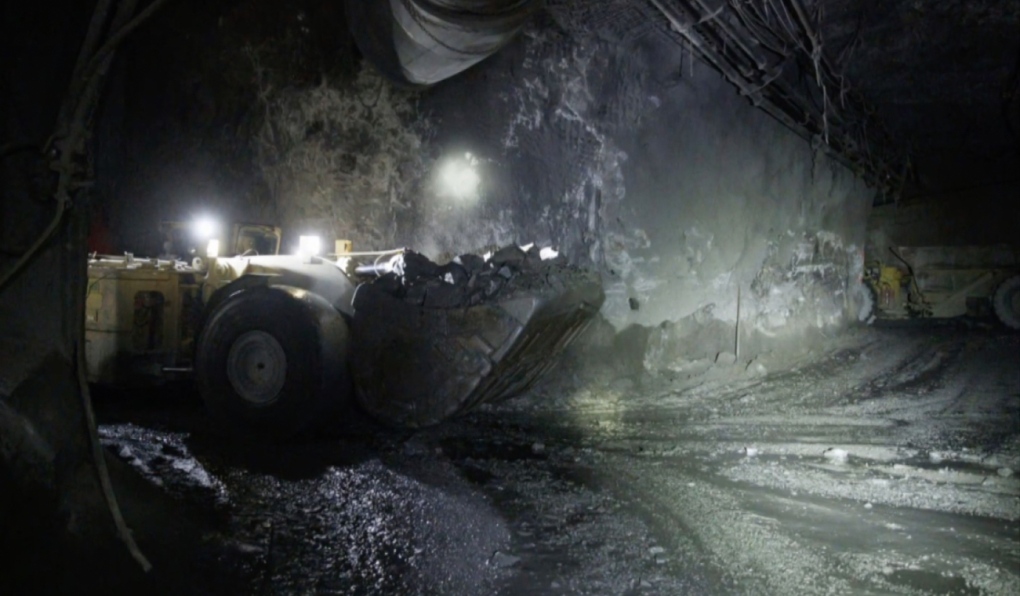First Nations say Ring of Fire development could have negative effects on water systems
There are concerns from Indigenous leaders and community members about the development of mines, including the Ring of Fire in the far reaches of northern Ontario.
At a three-day annual lands and resources forum in North Bay, members of the Anishinabek Nation expressed fears that further development could harm the environment, water and fish that swim in area lakes, rivers and streams.
First Nations leaders said they’re not being properly consulted on the development of mining in their territories.
“One of the chiefs from Long Lake #58, she was saying that after the Ring of Fire goes through, the area of the land when you look at the land, it will look like the moon. So there’s adverse effects,” said Rocky Bay First Nation Chief and Northern Superior Regional Deputy Grand Council Chief Mel Hardy.
“We always bring forth the issue of our treaties and when they’re infringing on our treaties.”
The forum, called Everything Is Connected, included representatives from 25-30 of the 39 Anishinabek Nation’s First Nations.
 There are concerns from Indigenous leaders and community members about the development of mines, including the Ring of Fire in the far reaches of northern Ontario. (File)
There are concerns from Indigenous leaders and community members about the development of mines, including the Ring of Fire in the far reaches of northern Ontario. (File)
They are calling on all levels of government to honour its treaty when it comes to mine development near Lake Nipigon and the Ring of Fire.
“If they cross over into the river and come into our lakes, the fish will come in sick and nobody will realize the effect it will have on our people,” said Hardy.
In 2023, Grassy Narrows, Wapekeka, Neskantaga, Kitchenuhmaykoosib Inninuwug, and Muskrat Dam First Nations created the Land Defence Alliance in an effort to defend their territories in the Ring of Fire.
The Ford government wants to mine the area for precious metals and critical minerals to be used as part of a manufacturing chain for electric vehicles and the batteries they require.
“Any chief that I’ve spoken with for any length of time has said ‘We support development. We’re pro-development and we want to get it right,” said Ontario’s Minister of Indigenous Affairs Greg Rickford while touring sites in Sudbury.
“That’s the good news story. We want to get it right, too.”
First Nations have growing concerns about the growing number of mining claims on their traditional territories.
“I’m the lead on the land and resources portfolio,” said Hardy.
“They don’t realize that the fish, birds and animals don’t see the lines the government draws in the sand.”
 There are concerns from Indigenous leaders and community members about the development of mines, including the Ring of Fire in the far reaches of northern Ontario. (File)
There are concerns from Indigenous leaders and community members about the development of mines, including the Ring of Fire in the far reaches of northern Ontario. (File)
The forum is meant to help build positive working relationships with First Nations, citizens, government, and industry professionals, to enhance decision-making that will act on matters that will protect First Nation jurisdiction, traditional territory, and rights; and serve as an opportunity to gather and discuss local and regional priorities, concerns, and opportunities for their communities.
“We consider our responsibility as stewards of the land,” said Anishinabek Nation Grand Council Chief Reg Niganobe.
“It’s been passed down to us for generations and that’s our original stories and teachings and therefore we take that very seriously into consideration when we consider projects and everything else.”
Rickford said the government is pledging to “strike the right” balance when it comes to development and proper consultation with leaders.
“Between protecting the environment and creating one of the most environmentally sound policies known the world over,” Rickford said.
There are three proposed roads for the Ring of Fire region. One would connect Marten Falls First Nation with the provincial highway system to the south. From there, another road would go directly to the proposed mine site, known as Eagle's Nest and owned by Ring of Fire Metals. A third road would connect Webequie First Nation to the mine.
Those two First Nations are leading an environmental assessment on the road and each is doing separate environmental assessments on the other roads.
Neither Marten Falls First Nation nor Webequie First Nation have agreed to anything beyond the environmental assessments.
“We commit to our northern communities that we will work with them to ensure they have the right infrastructure as a community to have a healthy and prosperous community,” Rickford promised.
As of early 2022, there are more than 25,000 active mining claims that are held by 15 companies and individuals, according to the province's Ring of Fire website.
CTVNews.ca Top Stories

Richard Perry, record producer behind 'You're So Vain' and other hits, dies at 82
Richard Perry, a hitmaking record producer with a flair for both standards and contemporary sounds whose many successes included Carly Simon’s 'You’re So Vain,' Rod Stewart’s 'The Great American Songbook' series and a Ringo Starr album featuring all four Beatles, died Tuesday. He was 82.
Hong Kong police issue arrest warrants and bounties for six activists including two Canadians
Hong Kong police on Tuesday announced a fresh round of arrest warrants for six activists based overseas, with bounties set at $1 million Hong Kong dollars for information leading to their arrests.
Read Trudeau's Christmas message
Prime Minister Justin Trudeau issued his Christmas message on Tuesday. Here is his message in full.
Stunning photos show lava erupting from Hawaii's Kilauea volcano
One of the world's most active volcanoes spewed lava into the air for a second straight day on Tuesday.
Indigenous family faced discrimination in North Bay, Ont., when they were kicked off transit bus
Ontario's Human Rights Tribunal has awarded members of an Indigenous family in North Bay $15,000 each after it ruled they were victims of discrimination.
What is flagpoling? A new ban on the practice is starting to take effect
Immigration measures announced as part of Canada's border response to president-elect Donald Trump's 25 per cent tariff threat are starting to be implemented, beginning with a ban on what's known as 'flagpoling.'
Dismiss Trump taunts, expert says after 'churlish' social media posts about Canada
U.S. president-elect Donald Trump and those in his corner continue to send out strong messages about Canada.
Heavy travel day starts with brief grounding of all American Airlines flights
American Airlines briefly grounded flights nationwide Tuesday because of a technical problem just as the Christmas travel season kicked into overdrive and winter weather threatened more potential problems for those planning to fly or drive.
King Charles III is set to focus on healthcare workers in his traditional Christmas message
King Charles III is expected to use his annual Christmas message to highlight health workers, at the end of a year in which both he and the Princess of Wales were diagnosed with cancer.

































